fireguzzi wrote:Oh his bikes just have "character."..... Lot's and lot's of character.... And I mean a LOT.

Funny, that's what everyone said about one of my mates in the 70s shortly before he got sent down.
As to my characterful steeds, they are being quietly characterful right now - so quietly characterful that I would like to kick them. This has left me feeling at something of a loss. Funny that! Since being bikeless, everything around me has felt suddenly intangible, as though I'm powerless to make anything happen in the world. It's like sleep paralysis, when you wake up in the morning and can't get your body to move. You flail around in your head but your physical body won't budge. That happened to me for a few months in my mid-twenties. It scared the living dodo out of me for a while and I was afraid to go to sleep. Then I found out it was fairly common and perfectly harmless. Being without a bike doesn't feel harmless. It feels like a threat. I'm wasting away.
It feels weird to be suddenly back down to a fraction of a horse power again, max (from 130 odd hp on the Daytona), and only that much if I stock up on bacon and eggs. It feels weird not having a bike to ride, and I don't like it.
Not being able to go on the rideout on Monday, dropped me into a hole. Everyone else had buggered off for the bank holiday weekend leaving me to fend for myself back here in Hitchin. I spent the morning (well, a few minutes, really) assessing how I was going to use the day. There are a growing number of jobs that need doing around the house. The fence needs fixing; the roof needs attention, I've bought a load of paint ready to redecorate the kitchen; the garden needs weeding and thinning out.
Unlike my house, I, on the other hand, am perfectly functional, and know damn well that doing jobs around the house is no way to spend a bank holiday Monday, especially if you are feeling glum around the gills because both your bikes are ready for the knackers yard.
That left me with only one rational option: I needed to take a train up to London and trog along to Camden Stables to cheer myself up. This place is the biggest Alka Seltzer pick-me-up known to humankind. There is no hangover, or letter from your bank manager that it will not cure or put into perspective.
Back in the nineteenth century Camden Lock was a huge commercial rail and canal depot. Goods were lifted from the Grand Union Canal and onto Midland Railway trains at the depot nearby. Horses were used for this - hundreds of them. To avoid having to walk the horses over the railway lines a labyrinthine network of brick-built underground passages, ramps and tunnels was built together with a big underground stables. Today the canal basin, the old stables and transfer yards are home to a huge market. It's the nearest thing in the UK to an oriental bazaar, a very English oriental bazaar - with horses - big bronze or brass horses - eveywhere - dozens and dozens and dozens of them, ramping, rearing, bursting out of walls, pulling drays or being quietly shod. All around them is an endless variety of market stalls and and an endlesser variety of human life.
Beyond the stables and the canal is Camden High Street, a wonderland for the young and uninhibited. If you are into clothes that are punky, kinky or just plain weird this is the place to come. All human life is here in its multitudinous strangeness. I won't bore you with a lot of words: here are some pics.
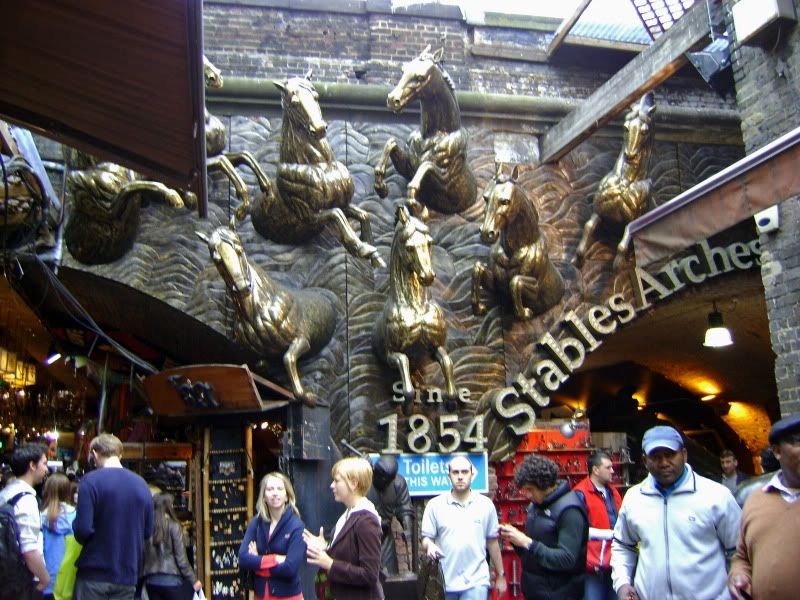

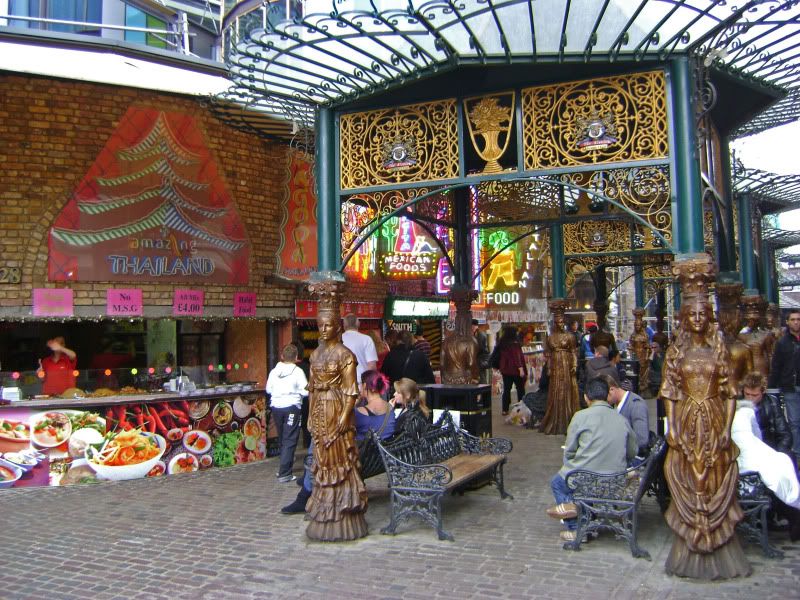
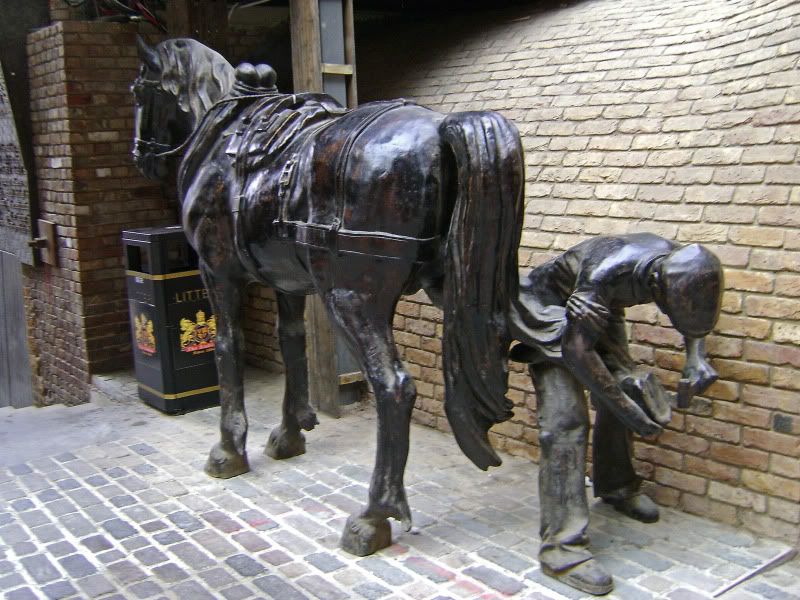
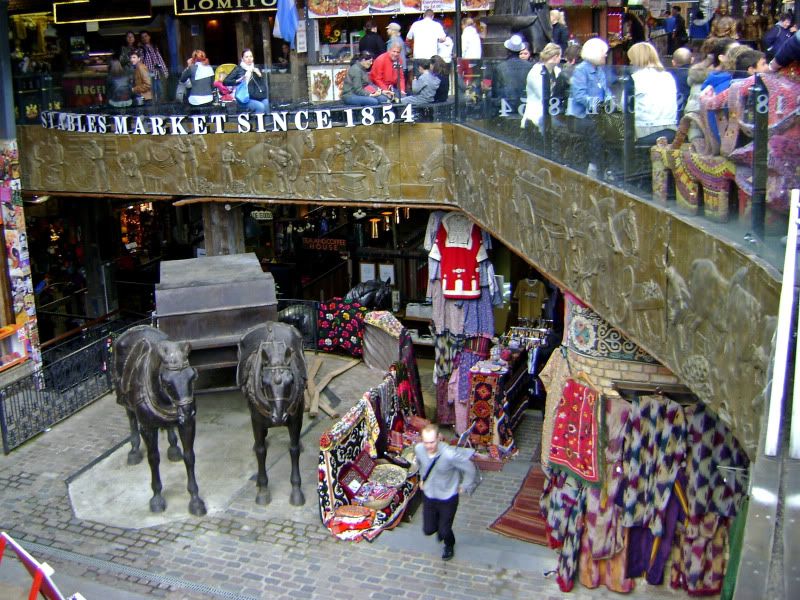
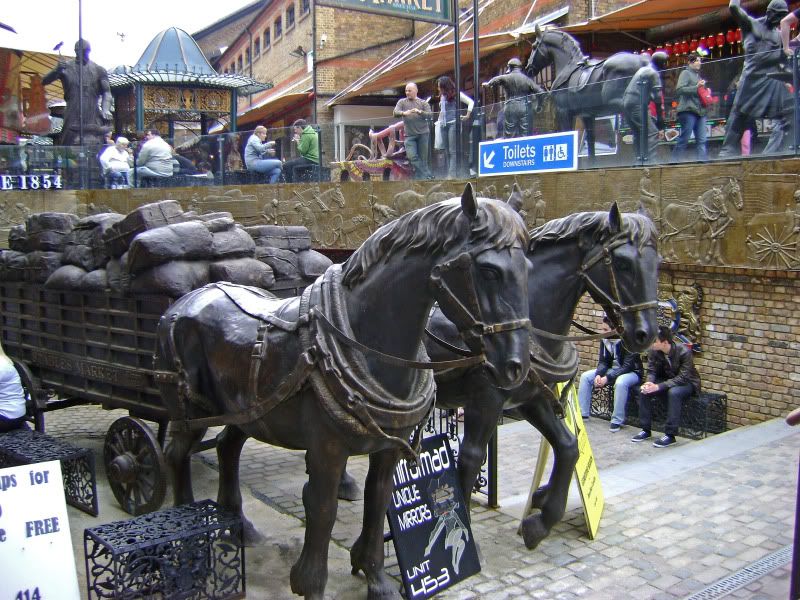
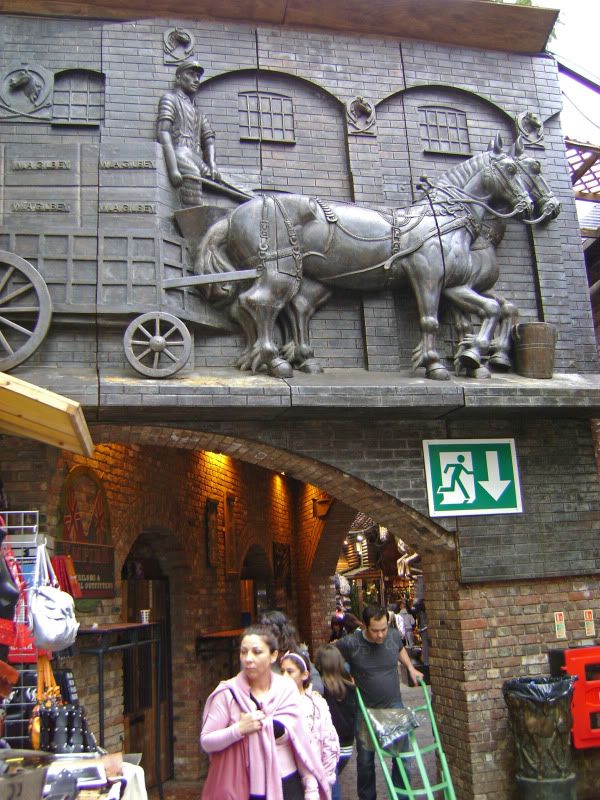

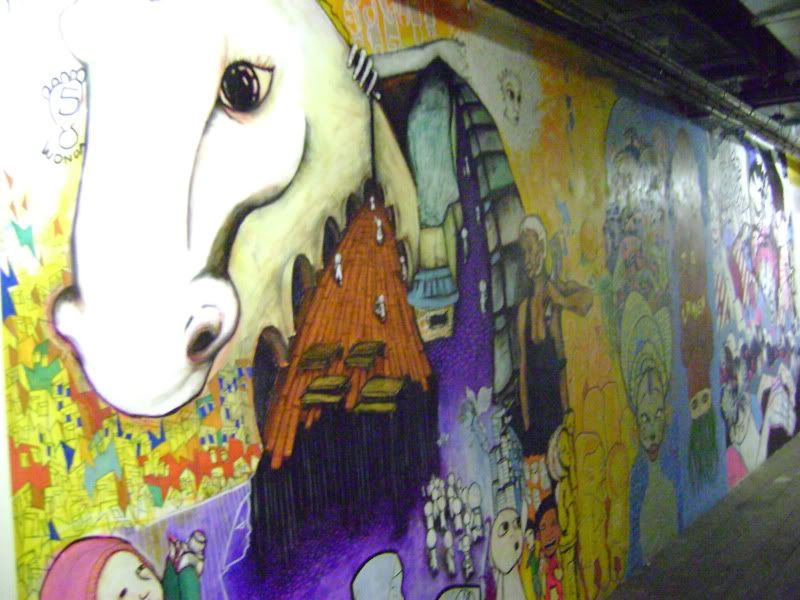 Murals outside the loos
Murals outside the loos
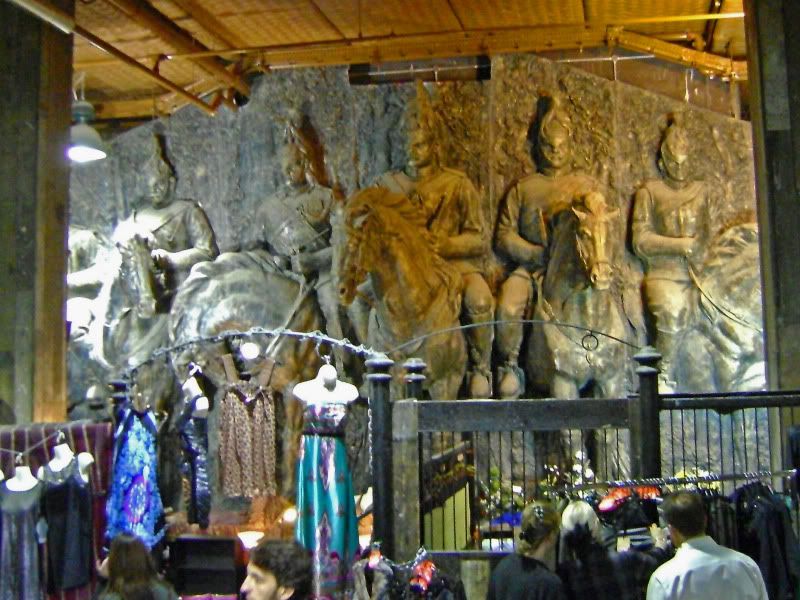
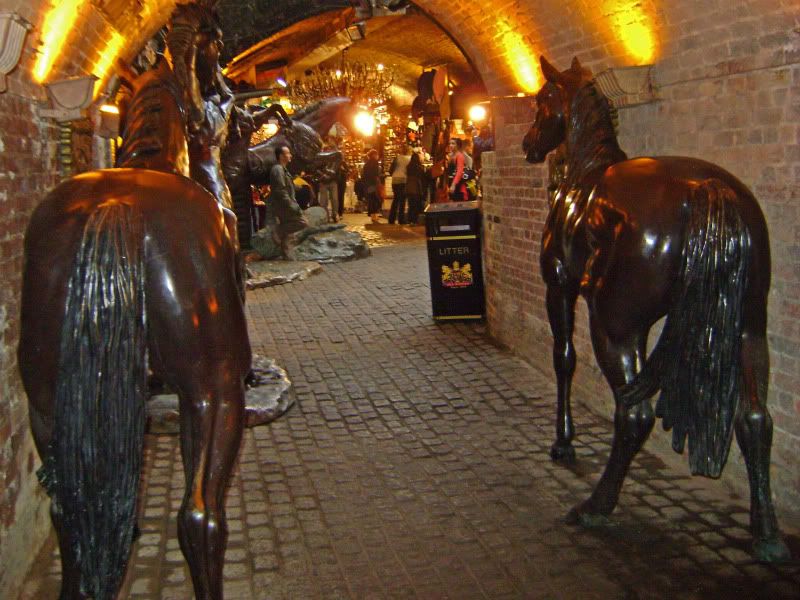
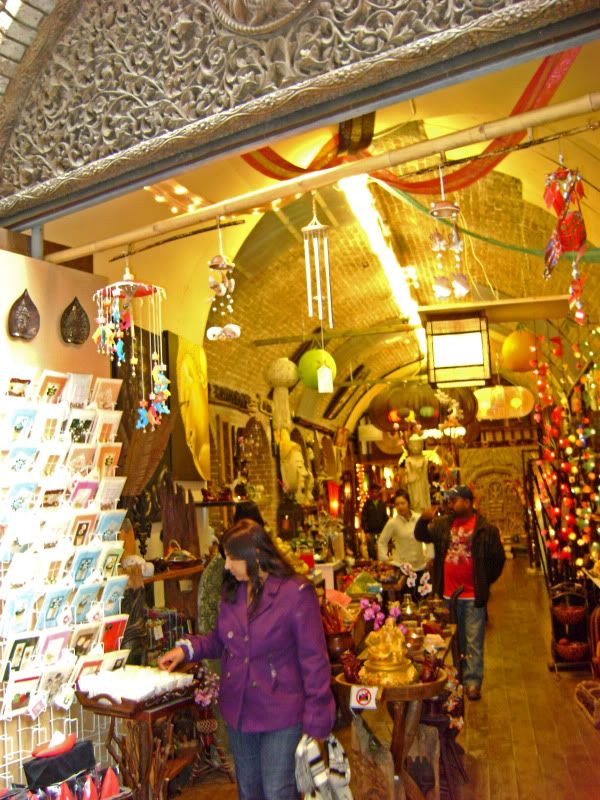
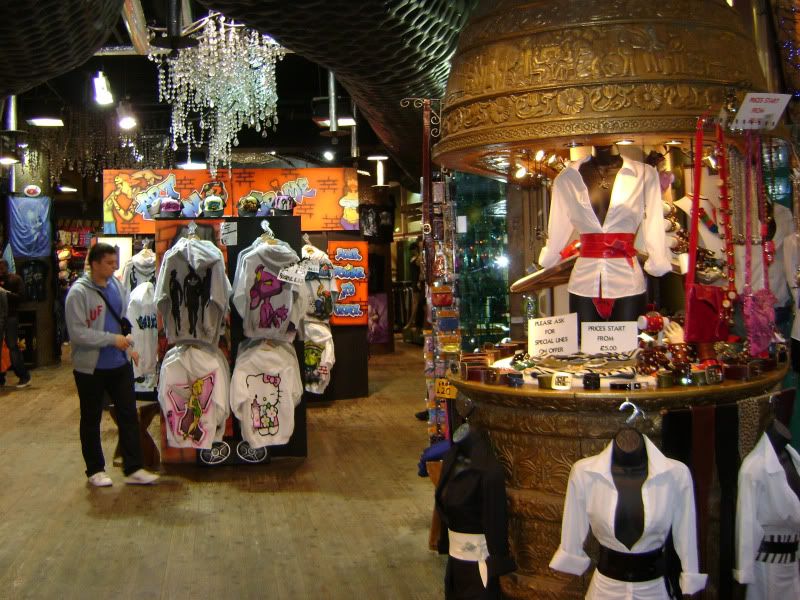



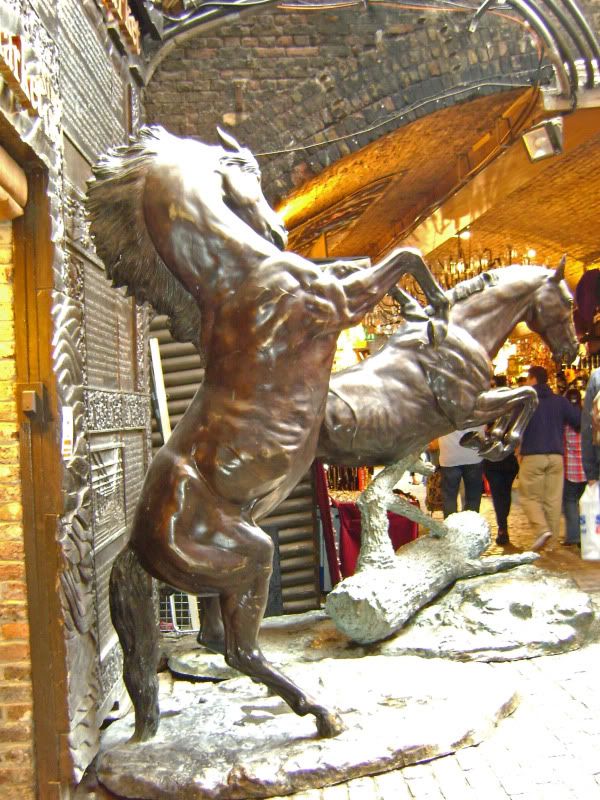
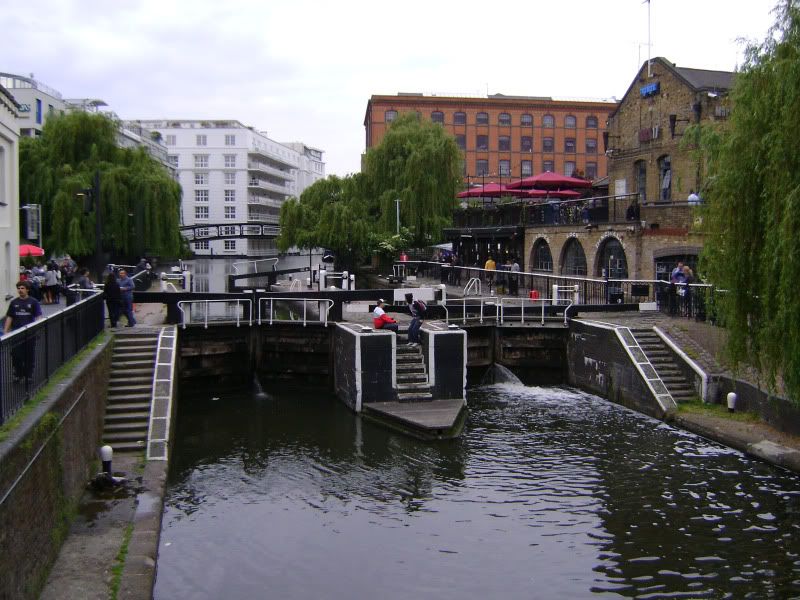 Camden Lock
Camden Lock
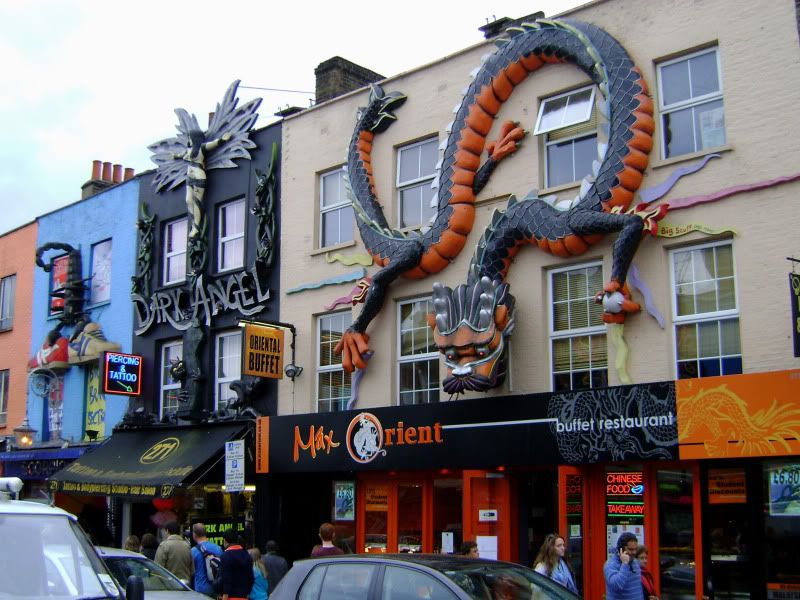 Camden High Street, home of the weird and wonderful
Camden High Street, home of the weird and wonderful
After leaving Camden, I took a trip into Central London. Keeping to the theme of the bizarre, here's a shot below of the latest 'statue' to occupy the notorious 'fourth plinth' in Trafalgar Square. When the plinth's previous occupant was removed (I forget why) there was a huge row about what would occupy it instead. The only thing people were sure about was that they didn't want to see yet another statue of a boring old general or king or politician. Since then it has been occupied by a succession of artworks and oddities.
For a while anyone could apply as a living statue to occupy the plinth for a couple of hours and do whatever they wanted. They were lifted up onto it on a mechanical elevator truck and then left to their own devices. Some bellowed Harry Potter at the crowd through a megaphone, others built model railways, other danced or sang or did gynmastics or just yelled abuse. It seems now we have - a ship in a bottle! I hesitated a moment before uploading this pic because it is spoiled somewhat by that bizarre red and white flag mounted on the embassy behind it.


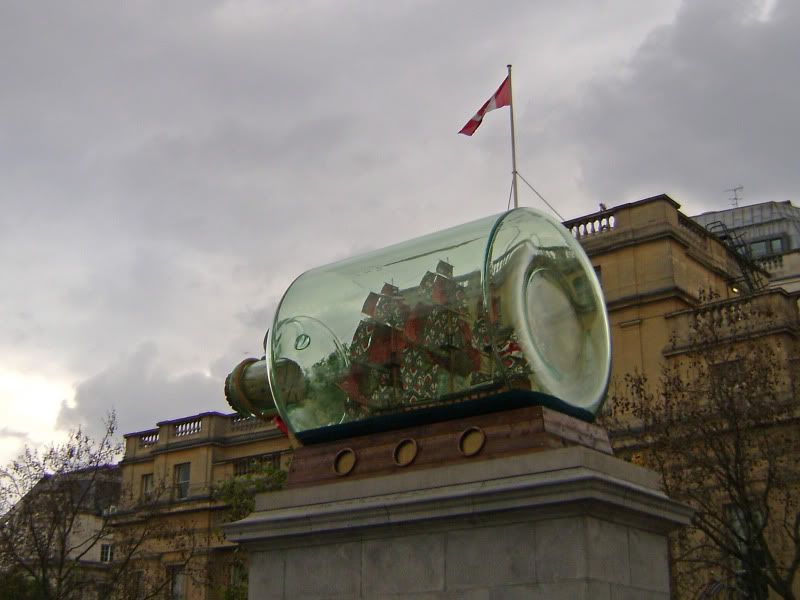
And since everyone who visits London wants to come away with a photo of this lairy little bugger (god only knows why!) in Piccadilly Circus, I will oblige. (Di always admired his tight little buttocks, but I will leave that judgement for others to make.) I thought the cranes at the end of Regent Street would demystify him nicely. And just to demistify him further, this is not a stature of 'Eros, god of love, (that would be far too interesting) but a statue of boring ol' 'Christian Virtue', erected in the memory of the (so-called) 'philanthropical' Lord Shaftesbury, who bulldozed a road diagonally through hundreds of properties down into Piccadilly Circus, opposite.
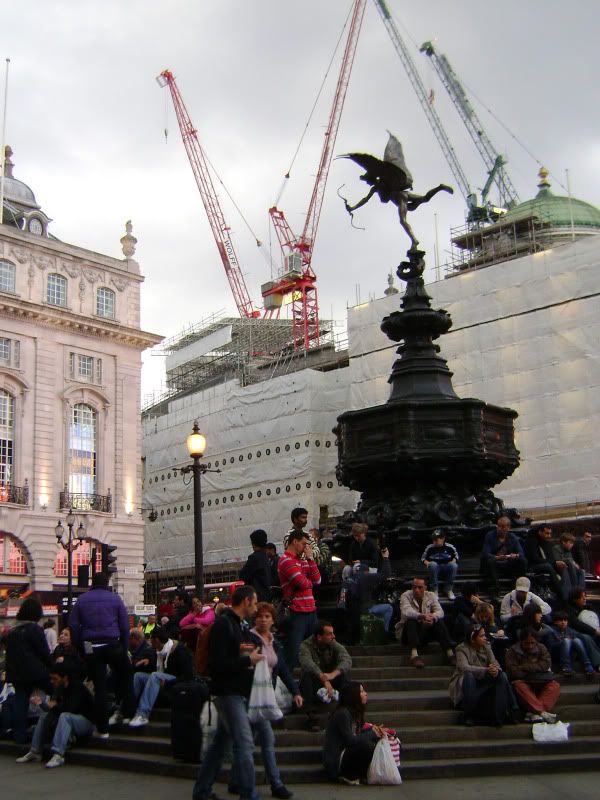 The spirit of Christian Virtue, aka the Saftesbury Memorial, or 'Eros'.
The spirit of Christian Virtue, aka the Saftesbury Memorial, or 'Eros'.
More mysitifcation? Here's a neat little group of statues commemorating the Crimean War at the bottom of Haymarket. Despite being a load of old chauvanist codswallop, I rather like it. It seems that William IV, one of Britain's less memorable monarchs is here represented by a lamp-post. That's Florence Nightingale, on the left with her lamp. The truth is that Florence Nightingale was little more than a rather anally retentive administrator. The real nursing hero of the war was Mary Seacole, a black Jamaican woman who was refused a post at Scutari, so made her own way out to the Crimea to minister to the forces there. She was far more popular among the soldiers than Nightingale who was very bitchy about her. After her death, Mary was completely forgotten and has only recently been rediscoverd and given the recognition she is due. She's one of my favourite people. She carried out medical procedures on the battlefield, helping anyone she found, whoever they were fighting for. She was a humanist, which in the scale of things stands about ten rungs above a nationalist or a patriot. She set up a shop selling basics to the soldiers who would otherwise have had to do without. She also cooked for them. Her autobigraphy makes an amazing reading.
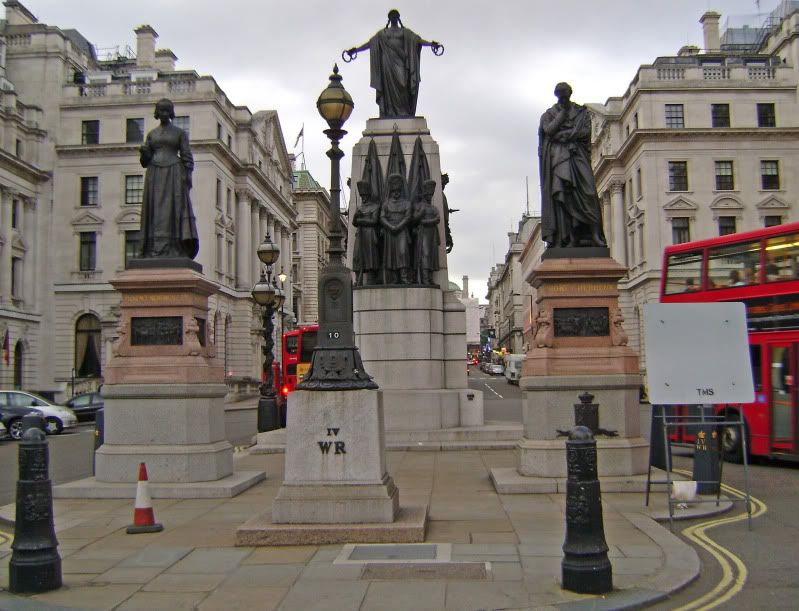 Crimean War memorial, Haymarket, London
Crimean War memorial, Haymarket, London
Well, that's my trip to London over then. I hope all the rest of you bastards out there have a great time riding your bikes over the next couple of weeks.
Spit! (Hnnnnnrrrh! -

, I guess)






















